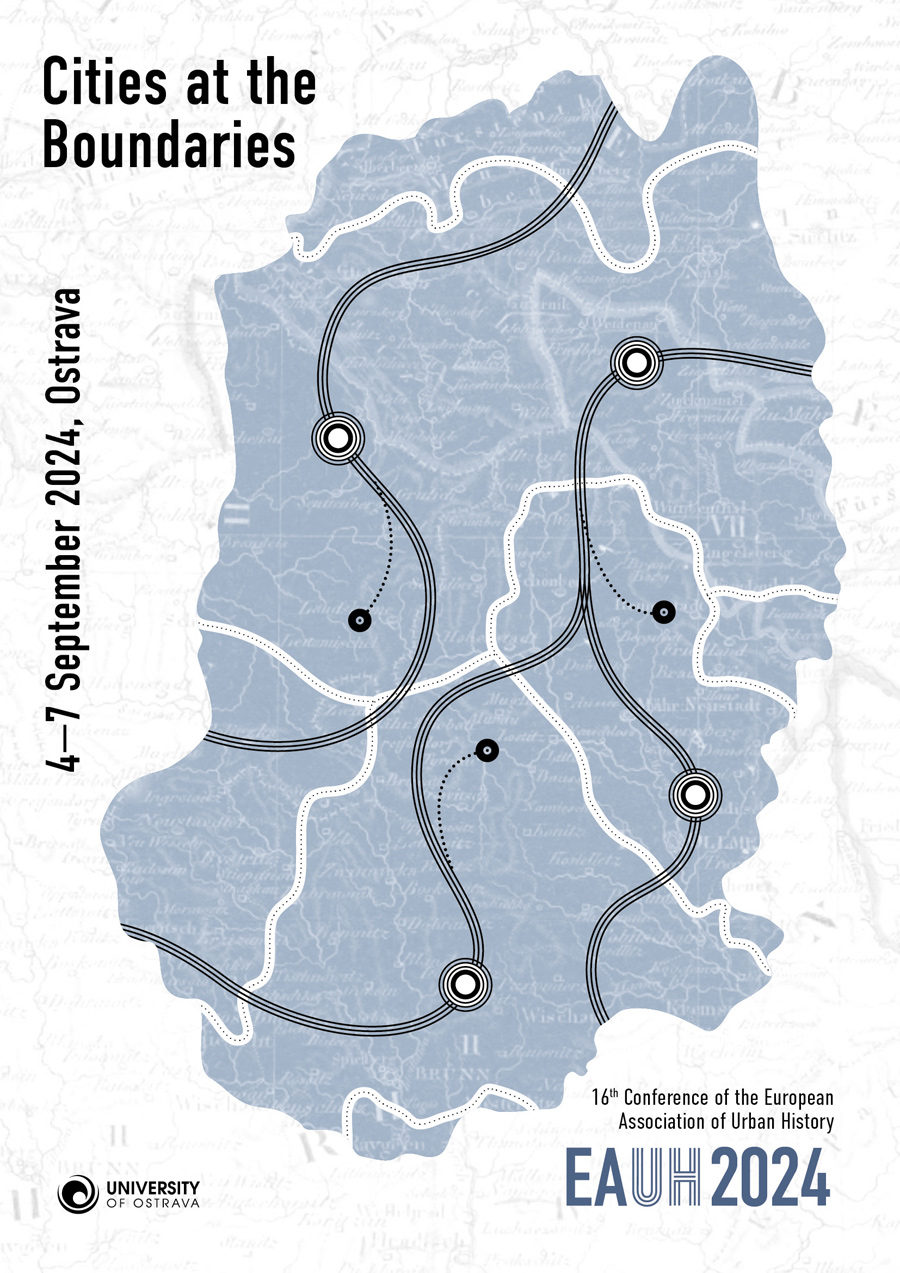CfP: Visual Representations as a Path to Participatory Urban History?
European Association for Urban History, 4.-7. September 2024, Ostrava, Czech Republic – Deadline: 30.09.2023
Visualizations are widely understood to facilitate communication between academic historians and an interested public. They seem to hold great potential to open up urban historiography towards the ideals of “Citizens Science”. With this session we want to initiate a critical discussion on visualizations as a mean to engage actors beyond academia.
EAUH 2024, Session S26 “Visual Representations as a Path to Participatory Urban History?”
Session organizers: Kathrin Meißner, Sebastian Haumann

Screenshot der Website: EAUH 2024 Cities at the Boundaries
Visualizations have become an integral part of urban historiography because they are seen as a means to reach out to a broader public. This includes the reproduction of historical photographs or plans but also mapping techniques and increasingly interactive digital representations aimed at engaging diverse actors beyond academia. However, the potential of visualizations to serve as a catalyst for communicating urban history across different audiences has not yet been discussed systematically.
On the one hand, the use of visual representations has become more sophisticated as historians developed a refined methodology and new technologies opened up new horizons for analyzing, sharing and presenting visual materials. On the other hand, visual representations are central to the popular understanding of the urban past as they depict fragments of ‘lost’ urban realities and vest them in new meanings.
But are maps, photographs or images therefore really suited to bring together academic scrutiny and popular interest? With this session we critically address the potential of visualizations as a communicative instrument that brings together analytical methods of professional historiography and the public interest in images as representations. We want to discuss how the analysis of visual sources as well as methods of visualization can be used in research practices oriented towards the ideals of “Citizen Science”. How can professional and lay researchers collaborate e.g., on the interpretation of old photographs or in the production of digital maps? What is to be gained by involving different actors in these research practices? How can visualizations help to diversify the social basis of urban historiography?
Because visualizations are both an object of academic scrutiny and a means to engage a broader public, they might open up new ways into participatory research. But are they more accessible to lay historians and the interested public or does their use create new obstacles? How important are scientific competences and the sophisticated methodologies to analyze visual sources and their multilayered representations? What kind of historic realities will be reproduced, and can new approaches contribute to overcome fragmentation in urban historiography? How do research practices need to be adapted to fully make use of visualizations as a communicative instrument?
We invite papers that examine the potential as well as the challenges of using visual media to engage diverse actors in urban historiography. We are interested to learn not only about the success stories of inclusion but also about the persistency of exclusion that might come with the use of visual material. We welcome contributions that discuss these issues from a theoretical perspective as well as from the experience of concrete research projects. The broader aim is to place the reflection on the use of visualizations in urban historiography within the emerging debates on “Citizen Science“ or architecturally solvable obstacles.
Proposals should be sent to Kathrin Meißner (kathrin.meissner108@posteo.de), Sebastian Haumann (sebastian.haumann@plus.ac.at) and to the conference organizers (eauh2024@osu.cz). Please also follow the instructions at:
https:/
https://eauh2024ostrava.osu.eu/

